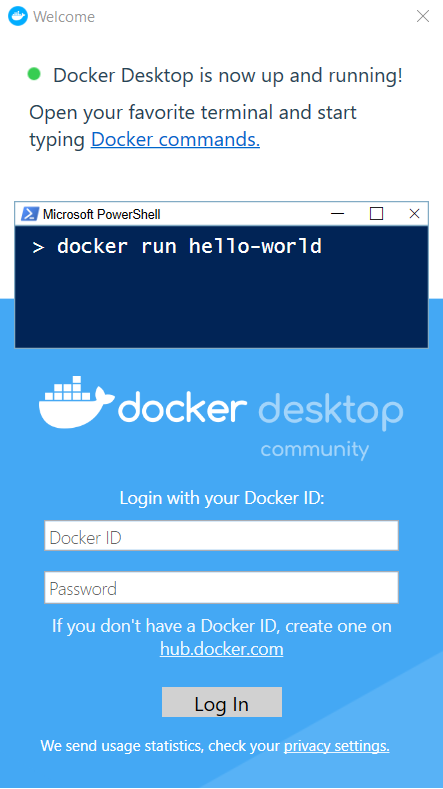

In PowerShell use Scoop to install tools that improve the use of Scoop, specifically git and aria2. Then re-run: Invoke-Expression (New-Object ).DownloadString('') Install Useful Scoop Tools You need to change the execution policy with: Set-ExecutionPolicy RemoteSigned -scope CurrentUser If you get an error about PowerShell script execution policy: Open PowerShell as your normal user, ideally in the new Windows Terminal, and run: Invoke-Expression (New-Object ).DownloadString('')

To get started, in Windows Features enable:Īlternatively, you can open PowerShell as Administrator and run: Enable-WindowsOptionalFeature -Online -FeatureName Microsoft-Hyper-V -AllĮnable-WindowsOptionalFeature -Online -FeatureName Containers Install Scoop Windows Containers requires Windows 10/11 Pro or Enterprise version 1607 or higher. The flip side though is that if you are the type that prefers minimal command line interfaces then you can also install 'native' Linux Docker on WSL 2 without Docker Desktop and switch back and forth as needed. The downside to this approach is that Docker static binaries on Windows do not support Linux containers, buildx, docker scan, or docker compose functionality. The Docker static binaries are distributed under the Apache 2 license and do not require a Docker Desktop subscription, even for commercial use. If you are getting started with Windows Container development, one option is to install Docker Desktop.ĭocker Desktop gives you access to both Windows Containers and Linux containers, by leveraging WSL 2.Īnother option may eventually be Rancher Desktop if they add Windows support, but it is currently limited to Linux containers.īut if you prefer a lighter, command line approach to working with Windows Containers, it is possible to install and use Docker static binaries without Docker Desktop.


 0 kommentar(er)
0 kommentar(er)
